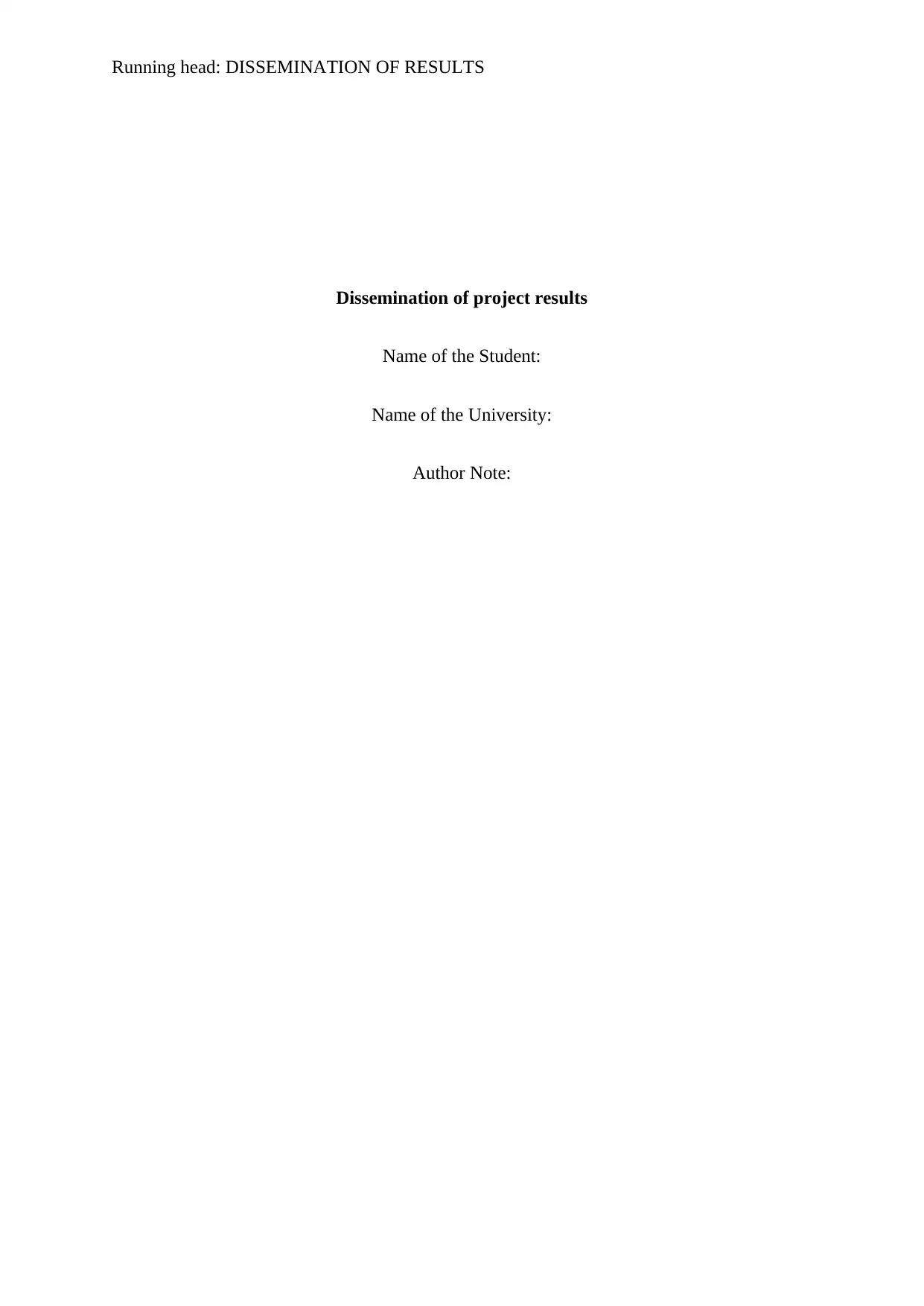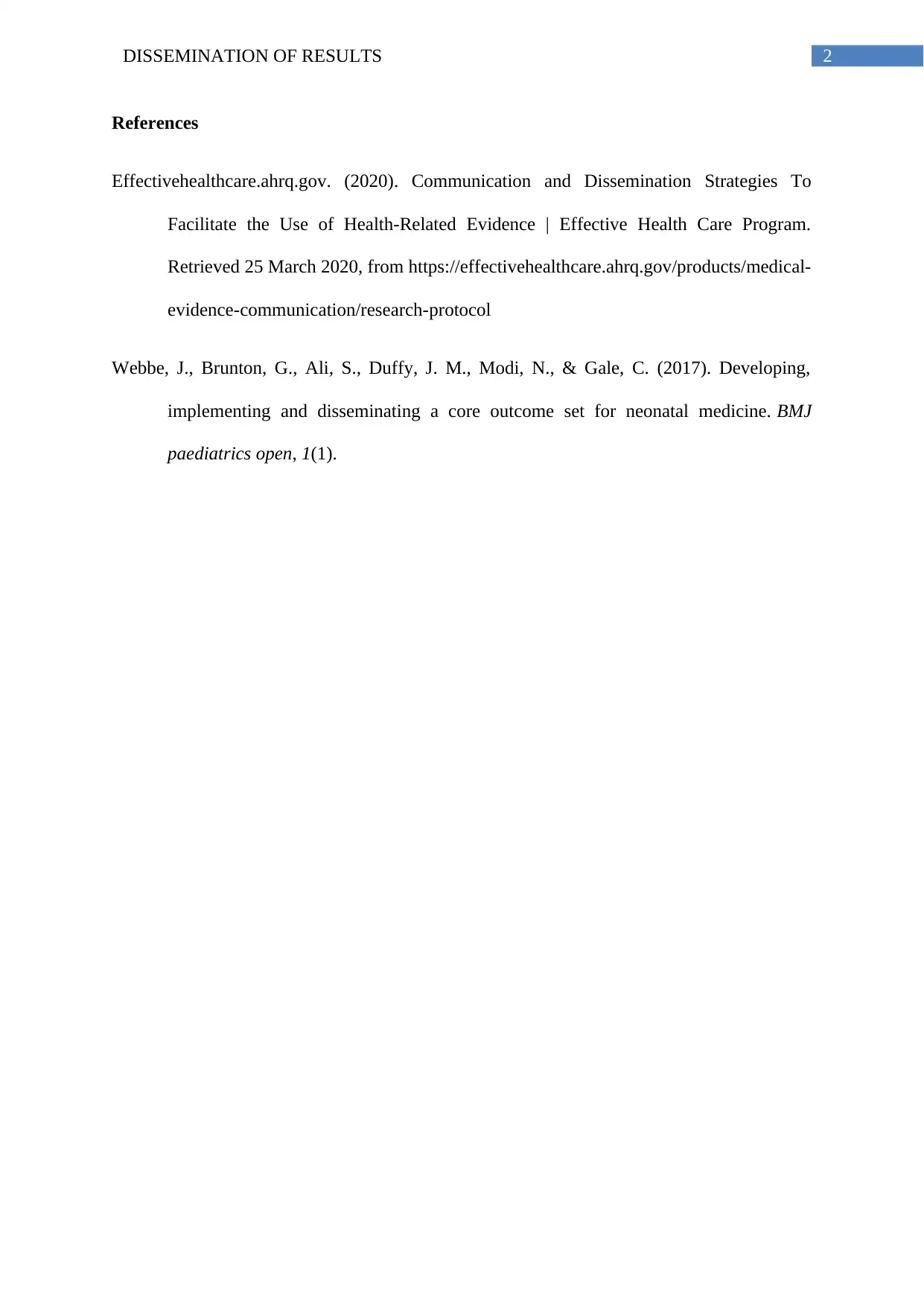Impact of Dissemination Strategies on Neonatal Respiratory Diseases
VerifiedAdded on 2022/08/28
|3
|418
|20
Report
AI Summary
This report focuses on the dissemination of project results related to neonatal respiratory diseases, emphasizing the importance of sharing findings with relevant stakeholders. The report highlights the significance of internal and external dissemination strategies, including the use of online discussion lists, workshop programs, newsletters, and flyers to reach different audiences. It underscores the need to tailor communication methods based on the target audience's attitudes, roles, and socio-psychological variables. The report references evidence-based practices and discusses the role of nurses' education, infection control, and parental support in addressing the challenges of neonatal respiratory diseases. The author emphasizes the importance of disseminating information to both healthcare professionals and the general public to improve patient outcomes and promote evidence-based practices. Furthermore, the report stresses the importance of the evidence-based practice review and technological advancements in neonatal care.
1 out of 3










![[object Object]](/_next/static/media/star-bottom.7253800d.svg)